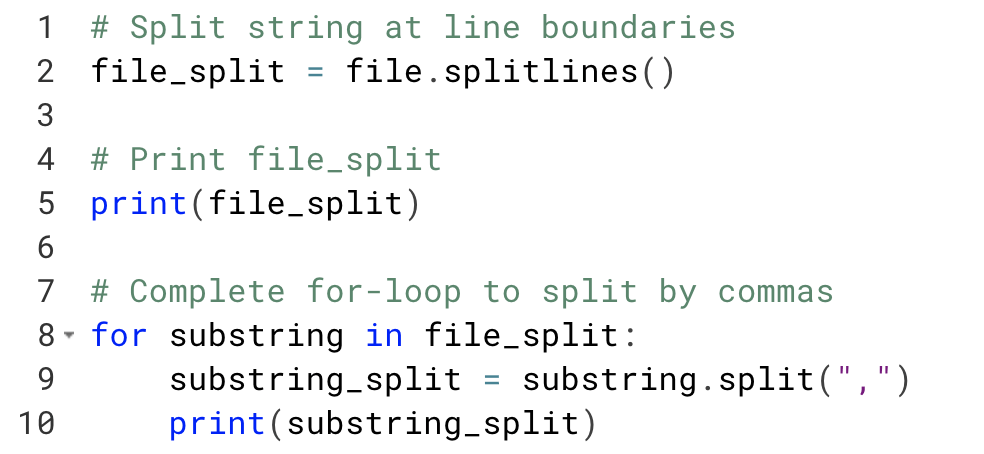Cours
Python string method split() inputs a string value and outputs a list of words contained within the string by separating or splitting the words on all the whitespaces by default. It also has an optional argument for limiting the number of splits.
The split() method converts the string into other data types like lists by breaking a string into pieces. Python provides us with two methods: .split() and .rsplit().
Both .split(), and .rsplit() take a separating element by which we are splitting the string, and a maxsplit tells us the maximum number of substrings we want.
Example of Using the .split() Method

Let's split the above string using the .split() method. Notice that the .split() method starts splitting at the left of the string. It takes two arguments: separator sep and maximum splits of the string maxsplit.

Example of Splitting Strings into Many Substrings
In the below example, you will split the string file into many substrings at line boundaries. Then, you will print out the resulting variable file_split. Finally, complete the for-loop to split the strings into many substrings using commas as a separator element.

When we run the above code, it produces the following result:
['mtv films election, a high school comedy, is a current example', 'from there, director steven spielberg wastes no time, taking us into the water on a midnight swim']
['mtv films election', ' a high school comedy', ' is a current example']
['from there', ' director steven spielberg wastes no time', ' taking us into the water on a midnight swim'].
To learn more about string operations, please see this video from our course, Regular Expressions in Python and check out our Python Regular Expression Tutorial.
This content is taken from DataCamp’s Regular Expressions in Python course by Maria Eugenia Inzaugarat.